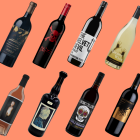The most desirable wines in the world can command eye-watering sums, so what are their shared characteristics? Below are the five most expensive wines on the planet (as of September 2020), and the traits they – and other pricey offerings – have in common.
- $558,000: 1945 Domaine de la Romanee-Conti, Romanee-Conti
- $500,000: 1992 Screaming Eagle Cabernet Sauvignon
- $310,700: 1945 Chateau Mouton Rothschild (Jeroboam)
- $304,375: 1947 Cheval Blanc
- $230,000: 1869 Chateau Lafite Rothschild
1. Popular wine grapes
Rare grape varieties have a certain appeal with collectors and wine enthusiasts, but their scarcity doesn’t necessarily correspond to value. Most of the world’s most expensive wines are actually made from very common grape varieties. According to Wine-Searcher, for example, half of the 50 most expensive wines listed on the site are Pinot Noir, while 24 of the 25 most expensive American wines are Cabernet Sauvignons.
2. Oak aging
Contemporary wine trends may be moving towards minimal oak, but on the fine wine landscape oak aging still reigns supreme. French oak largely rules the roost, acting as the standard vessel of choice for iconic producers throughout France and around the world. Napa classic Screaming Eagle, for example, uses 65% new French oak for its Cabernet Sauvignon.
3. Aging potential
The most expensive wines are designed to be cellared for years, if not decades. How makers achieve this will depend on the grape variety involved, but generally speaking they’ll involve high levels of acidity – low acid wines don’t age well. More inexpensive wines might achieve this with acidification, but high quality producers, such as those listed above, will always try to minimise the use of additives.
4. Microclimate
There are only a handful of vineyards in the world where soil, vineyard orientation and climate truly complement one another perfectly. And the activities undertaken in those vineyards will affect them for years to come. As such, many of the world’s most expensive wines come from single estates, with biodynamics an increasingly common feature among the finest producers.
5. Vintage
High quality producers know that their best efforts cannot be produced every year, so the most expensive wines are often those produced in exceptional years. Bordeaux’s Chateau Petrus, for example, makes wine every vintage, but unless it meets the estate’s high standards it will be sold as a generic Pomerol wine, and not a Petrus vintage. Famed Spanish winery Vega Sicilia, meanwhile, will only produce its flagship Unico wine on the very best years, and then it’s aged for at least a decade before being released.
These factors, coupled with the estates’ esteemed reputations and the laws of supply and demand, are what adds up to the astonishing price tags mentioned above. As always, though, wine is very much a subjective endeavour, and fortunately for those who don’t have a cool half a million floating around, the most expensive doesn’t necessarily mean the best or most enjoyable!






